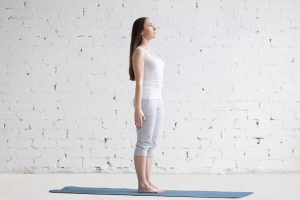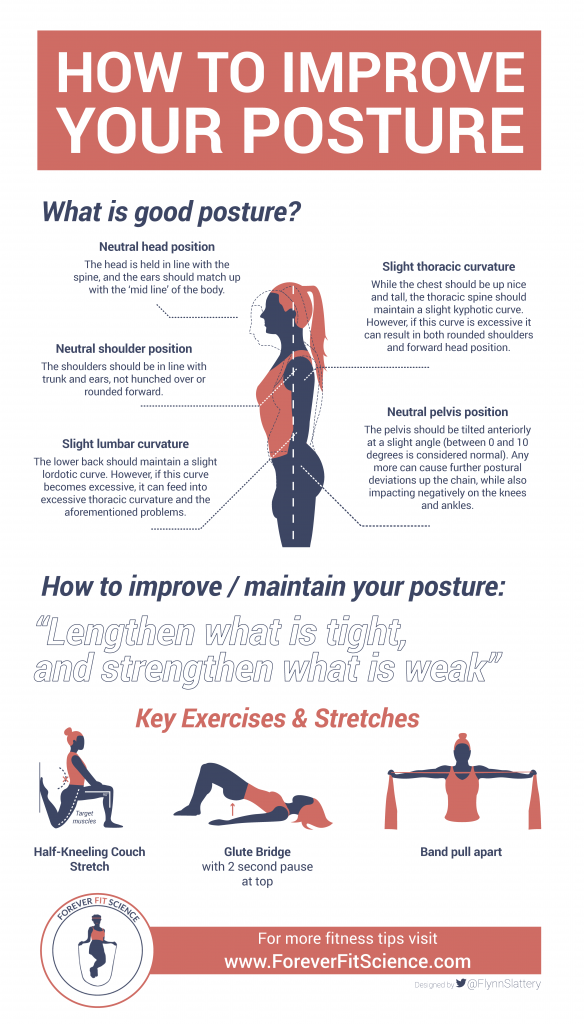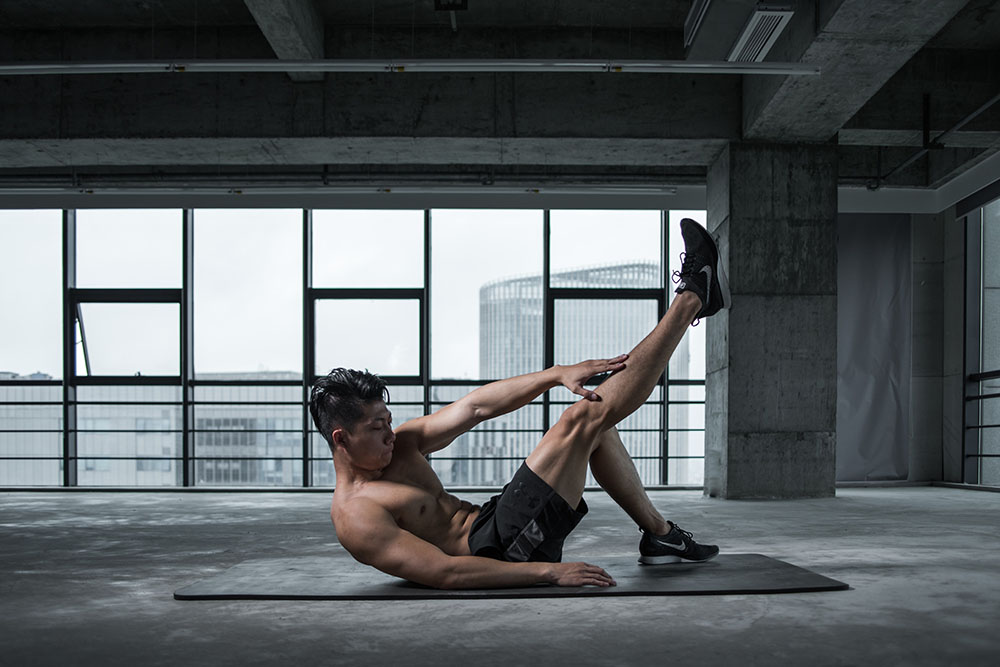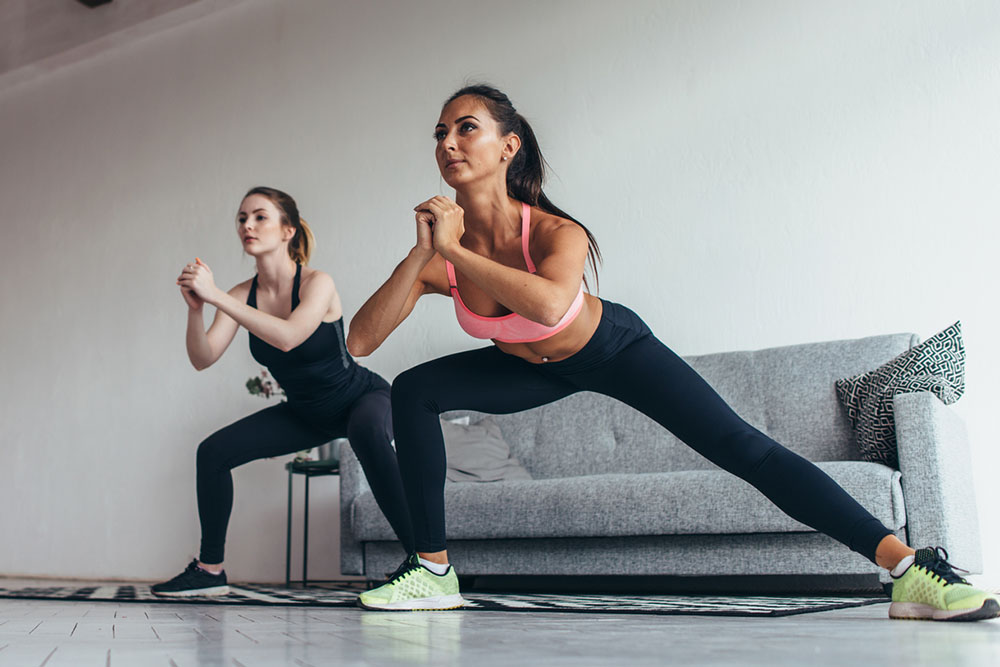How to Improve Your Posture

Hunter Bennett
Changes in Movement
Over the last 50 years or so we have seen some rather drastic changes to the world we live in. Through some unbelievable advancements in technology, we no longer have to use our bodies in the same way that we used to. Now, for the most part, I would say that this is a pretty positive thing.
We no longer need to grow our own vegetables, wash our own clothes by hand, and perform manual labor every single day.
However, this has come with some rather negative implications – one of which relates to the fact that we now have the luxury of spending much more time performing sedentary behaviors.
While most of us realize that this reduction in physical activity can wreak havoc with our metabolic and cardiovascular health, many don’t realize that it can also impact us in a number of different ways – such as posture.
What is good posture?
The term ‘good posture’ can be somewhat ambiguous. As people have different limb lengths, different biomechanical makeups, and different muscle architecture, its common to see slight variations in the way people hold themselves and it still is considered normal.
However, there are common trends across these individuals that, in my mind, really stand out as good postural positions. These are:
- Neutral head position: the head is held in line with the spine, and the ears should match up with the ‘midline’ of the body.
- Neutral shoulder position: the shoulders should be in line with trunk and ears, not hunched over or rounded forward.
- Slight thoracic curvature: while the chest should be up nice and tall, the thoracic spine should maintain a slight kyphotic curve. However, if this curve is excessive it can result in both rounded shoulders and forward head position.
- Slight lumbar curvature: the lower back should maintain a slight lordotic curve. However, if this curve becomes excessive, it can feed into excessive thoracic curvature and the aforementioned problems.
- Neutral pelvis position: The pelvis should be tilted anteriorly at a slight angle (between 0 and 10 degrees is considered normal). Any more can cause further postural deviations up the chain, while also impacting negatively on the knees and ankles.
Related Article: The Best Posture is Your NEXT Posture
What is the importance of good posture?
Many people simply consider posture from an appearance perspective – in which the ‘hunched over’ position indicative of poor posture looks undesirable. But it can also have a number of other negative implications on the body.
Joint Alignment
First and foremost, poor posture places joints in undesirable positions. These joint imbalances then, in turn, limit the normal contractile capabilities of the many muscles and tendons that attach to that joint, thus inhibiting normal movement (Czaprowski, 2018).
This can have implications from a physical performance perspective, limiting your ability to produce force at a joint, while also impacting your ability to perform tasks of daily living in comfort (such as reaching above your head) (Singla, 2017).
Balanced Movement
Secondly, these same postural imbalances result in the development of an incomplete relationship among body parts, which can again result in the development of undesirable joint loads during movement.
This can contribute to the development of inefficient movement patterns that will lead to poor and inefficient load distribution through joint structures (think ligaments, cartilage, and tendons), which can, in turn, lead to the onset of chronic overuse injuries (Alizadehkhaiyat, 2017). It is for this reason that poor posture has been shown to contribute to things like shoulder impingement syndrome and chronic low back pain.
Muscle and Joint Health
Finally, simply having poor posture has been shown to contribute to muscle and joint pain, even without any associated tissue damage (Kim, 2015). This suggests that poor posture can result in inefficient and undesirable muscle loads, as well as the joint loads already discussed.
With all this in mind, I would go as far as to state that good posture is essential for ensuring that the balance of the body is maintained.
This will allow the proper arrangement of joints and their supporting structures, the efficient loading of those individual muscles and joints, and subsequently, the effective and normal functioning of the body’s entire musculoskeletal system.
In my opinion, it would not be unrealistic to state that good posture is essential for a healthy life.
Does sitting effect posture?
I spoke briefly about how we are doing less and that might be contributing to our poor posture – but it is important to note that one of the primary culprits of poor posture is an increase in sedentary behavior.
Namely sitting.
Sitting and Hip Positioning
In the seated position, our hips are permanently rotated anteriorly (think tilted forward). This results in the hip flexors and other muscles at the front of the hip becoming short and stiff, creating an excessive anterior tilt during standing (Cho, 2015). This tilt can then feed into excessive lordosis of the lumbar spine.
In conjunction with the hip, sitting also feeds into a ‘slouched posture’ at the thoracic spine, shoulders, and head (Heneghan, 2018).
Sitting and Chest/Shoulder Positioning
This results in the muscles at the front of the chest and top of the shoulder (think pectoralis minor, anterior deltoids, and upper trapezius) becoming short and stiff, while the muscles of the upper back (think rhomboids, lower trapezius, and rear deltoids) become long and weak.
The result is excessive thoracic kyphosis, rounded shoulders, and a forward head posture – all of which are pretty undesirable if you ask me.
Does core strength impact posture?
The muscles of the core are essential when it comes to providing stability and rigidity to the spine. In this manner, they act like a brace, ensuring that the spine does not fall into undesirable positions or buckle under external load. As a result, weak core muscles can indeed have an impact on posture (Lee, 2015).
How Core Strength Affects the Lumbar
If the muscles of the core are weak, the lumbar spine can have a tendency to fall into excessive extension. This reinforces that undesirable lordotic position we discussed above, in which the ribcage and pelvis essentially ‘open up’.
Over time this postural deviation can become somewhat permanent, further reinforcing anterior tilt of the pelvis and excessive thoracic kyphosis, while also causing the erector muscles of the lumbar spine to become short and stiff.
As a result, maintaining adequate core strength is essential when it comes to ensuring normal posture and function.
Frozen shoulder and posture
Frozen shoulder (also known as ‘adhesive capsulitis’) is a painful and debilitation condition that is thought to affect up to 5% of the total population. (Chan, 2017)
This interesting condition occurs when the capsule of the shoulder suddenly becomes thickened, in which it adheres the humeral head of the upper limb. This causes a significant loss of motion, as well as associated pain and a loss of normal function.
While the exact mechanism for frozen shoulder remains somewhat unclear, it is thought to occur in response to prolonged inflammation within the shoulder joint.
Frozen shoulder has been shown to result in significant postural deviations that are typical of people who spend too much time in a seated position. This means excessive thoracic curvature, forward shoulders, and a permanently elevated scapula. In this manner, the shoulder often appears to be in a position of permanent ‘shrugging’.
Movement and Muscular Dysfunction
This tends to come with associated changes in movement and muscular dysfunction, with the upper trapezius muscles becoming dominant during any shoulder  movements that require elevation, and the lower trapezius becoming permanently downregulated. Now with all of this, the interesting this is that the thickening that occurs with this disease leads to less space within the shoulder joint, causing a subsequent loss in shoulder range of motion.
movements that require elevation, and the lower trapezius becoming permanently downregulated. Now with all of this, the interesting this is that the thickening that occurs with this disease leads to less space within the shoulder joint, causing a subsequent loss in shoulder range of motion.
Now I say interesting because this is exactly what occurs with poor posture typified by round shoulders and thoracic kyphosis.
As a result, ensuring that you maintain good posture is not only an excellent way to maintain shoulder function and limit joint inflammation but also offers a potential means to limit the severity of frozen shoulder if it were to occur (Page, 2010).
Related Article: Exercise & the Prevention of Spinal Stenosis
How can I improve my posture?
Despite the complexities surrounding poor posture, we can actually apply quite a simple methodology to correct it – namely stretching those muscles that have become short and stiff, and strengthening those that have become long and weak (Harman, 2005).
Stretching
We want to spend a bit of time stretching those anterior muscles that become shortened during sitting. This means quads, hip flexors, pectoralis muscles, and upper trapezius, are the perfect place to start.
Strengthening
Additionally, we want to strengthen those muscles that allow our posture to be driven by those tight muscles – essentially the antagonists to the muscles above. In this regard, strengthening the glutes, hamstrings, lower trapezius muscles, rhomboids, and rear deltoids is essential.
In conjunction with these movements, there also appears to be merit in actively performing thoracic mobility exercises (Cho, 2017) in conjunction with core strengthening exercises, as each of these has been shown to help improve unwanted postural deviations associated with excessive sitting.
The best exercise program to improve posture
Taking all of the above into consideration, I have put together what I believe to be the perfect training program to improve posture. This program can be done at home or at the gym and takes minimal time to complete – meaning that it can be done when you first wake up, before you go to bed, or even as part of your warmup at the gym. The key is to complete as often as possible.
Think, if you are spending hours per day sitting, then you are going to need to take a bit of time to reverse that!

Take Home Message
Ensuring that you maintain good posture is hands down one of the most important things that you can do for your muscle and joint health. It guarantees that you move efficiently while minimizing your risk of chronic overuse injuries.
However, with the increasing amount of sitting that we do on daily basis, posture is becoming worse. Which is why we have gone ahead and provided a program that can help you achieve good posture. These exercises aim to improve all aspects of posture, strengthening the muscles of the core, hips, and upper back, while also stretching those muscles that are known to make posture worse.
So, give it a go and let us know what you think!
References
Czaprowski, Dariusz, et al. “Non-structural misalignments of body posture in the sagittal plane.” Scoliosis and spinal disorders 13.1 (2018): 6.
Singla, Deepika, and Zubia Veqar. “Association between forwarding head, rounded shoulders, and increased thoracic kyphosis: a review of the literature.” Journal of chiropractic medicine 16.3 (2017): 220-229.
Alizadehkhaiyat, Omid, et al. “Postural Alterations in Patients with Subacromial Impingement Syndrome.” International journal of sports physical therapy 12.7 (2017): 1111.
Kim, DeokJu, et al. “Effect of an exercise program for posture correction on musculoskeletal pain.” Journal of physical therapy science 27.6 (2015): 1791-1794.
Cho, Il Youp, et al. “The effect of standing and different sitting positions on lumbar lordosis: radiographic study of 30 healthy volunteers.” Asian spine journal 9.5 (2015): 762-769.
Heneghan, Nicola R., et al. “What is the effect of prolonged sitting and physical activity on thoracic spine mobility? An observational study of young adults in a UK university setting.” BMJ open 8.5 (2018): e019371.
Lee, Jung-seok, et al. “Effects of selective exercise for the deep abdominal muscles and lumbar stabilization exercise on the thickness of the transversus abdominis and postural maintenance.” Journal of physical therapy science 27.2 (2015): 367-370.
Chan, Hui Bin Yvonne, Pek Ying Pua, and Choon How How. “Physical therapy in the management of frozen shoulder.” Singapore medical journal 58.12 (2017): 685.
Page, Phil, and Andre Labbe. “Adhesive capsulitis: use the evidence to integrate your interventions.” North American journal of sports physical therapy: NAJSPT 5.4 (2010): 266.
Harman, Katherine, Cheryl L. Hubley-Kozey, and Heather Butler. “Effectiveness of an exercise program to improve forward head posture in normal adults: a randomized, controlled 10-week trial.” Journal of Manual & Manipulative Therapy 13.3 (2005): 163-176.
Cho, Juchul, Eunsang Lee, and Seungwon Lee. “Upper thoracic spine mobilization and mobility exercise versus upper cervical spine mobilization and stabilization exercise in individuals with forward head posture: a randomized clinical trial.” BMC musculoskeletal disorders 18.1 (2017): 525.
You Might Like:













